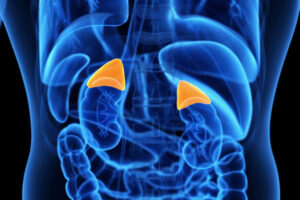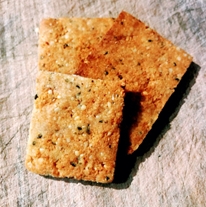by Tay Gabbidon | Mar 26, 2023 | Blog, Cardio, Science, Uncategorized

Steady-State Cardio v HIIT – Which is Better?
Steady-state cardio (SSC) and high-intensity interval training (HIIT) are two very different types of exercise. While SSC is typically done at a moderate level of intensity for an extended period of time, HIIT involves bursts of high-intensity exercise followed by periods of rest or low-intensity exercise.
So, which one is better? The answer actually depends on your fitness goals and personal preferences.
However, here are some factors to consider when comparing steady-state cardio to HIIT:
Time Efficiency
HIIT typically takes less time to complete than steady-state cardio because of the high-intensity bursts that are involved. In fact, research has shown that just 15-20 minutes of HIIT can produce similar results to 45-60 minutes of steady-state cardio. Therefore, if you are short on time, HIIT may be the better choice for you.
Caloric Burn
HIIT has been shown to burn more calories in a shorter amount of time than steady-state cardio. This is because the high-intensity bursts increase your metabolism and keep it elevated throughout the day. HIIT also depletes glycogen stores in the muscles quicker than SSC, making it easier to achieve thermogenesis (burning of fat). However, steady-state cardio is still effective for burning calories and can be a great option for those who enjoy longer, more relaxing workouts.
Cardiovascular Health
Both types of exercise are great for improving cardiovascular health. However, SSC is typically better for increasing endurance and cardiovascular capacity, while HIIT is better for improving overall cardiovascular function and reducing the risk of heart disease.
Muscle Building
HIIT is great for building lean muscle mass, as it involves strength-training exercises in addition to cardio. Steady-state cardio, on the other hand, can actually break down muscle mass if done for too long or too frequently. Visualise, and compare the physiques of marathon runners v. 100 meter sprinters. The difference in overall muscle mass speaks for itself.
Injury Risk
HIIT can be more intense and may pose a higher risk of injury if not done properly. Steady-state cardio, while still requiring proper form and technique, is generally lower impact and less likely to cause injury.
In conclusion, both steady-state cardio and HIIT are effective forms of exercise that offer different benefits. Ultimately, the best choice for you will depend on your individual goals and preferences. Mixing both types of exercise into your workout routine is also a great option to get the best of both worlds.
References:
https://pubmed.ncbi.nlm.nih.gov/25162652/
https://pubmed.ncbi.nlm.nih.gov/22201691/
https://pubmed.ncbi.nlm.nih.gov/17414804/
Did you enjoy this article? Here’s another!: https://immortal-training.com/10-ways-to-boost-your-metabolism/
by Tay Gabbidon | Mar 15, 2023 | Blog, Nutrition, Science, Uncategorized
WHAT ARE THE MAIN CAUSES OF BELLY FAT IN WOMEN?
There are many causes for belly fat storage in women, but in this article we will focus on the five biggest, as they are completely different for women than they are for men.
In my experience and research, I have found that the most common problems that women face have to do with one, or more of the following:
- Thyroidal minerals
- Calories
- Protein
- Vitamin D, and/or
- Sleeping patterns
THYROID MINERALS
WHAT ROLE DOES THE THYROID PLAY IN BELLY FAT STORAGE FOR WOMEN?
Thyroid minerals seem to play a much bigger role in weight loss in women than it does for men. Studies show that one in ten men are affected by thyroid issues, compared to one in ten women. The American Thyroid Association estimates that five to eight women are affected by Hashimoto’s to every one man.
THYROID HORMONES
Our thyroids produce a hormone known as T4 (thyroxine), which gets converted into T3 (triiodothyronine). T3 is the active thyroid hormone that acts on the tissues & cells in our bodies to control metabolism. It does this by increasing oxygen in the mitochondria that causes thermogenesis (burning of fat). T3 also plays a vital role in metabolising glucose/carbohydrates.
The inability to produce adequate levels of T3 will make it difficult to efficiently burn glucose in the cell. Glucose eventually gets converted into fat in the liver through a process called de novo lipogenesis (storing of fat), and liver fat accumulates to… guess what… belly fat.
HOW TO HACK YOUR THYROID
Iodine is critical for creating thyroid hormone. In supplement form it is usually sold in the form of sea kelp, but seafood, and seaweed are the best food sources.
When the thyroid converts iodine it also creates hydrogen peroxide, which can can trigger symptoms in people with autoimmune conditions, such as Hashimoto’s. Selenium is a mineral that is needed for the conversion of T4 into T3 that also neutralises hydrogen peroxide, so it should be taken alongside iodine.
Zinc is another important thyroid mineral, which needed to trigger the thyroid hormone receptors in the hypothalamus gland of the brain.

LOW CALORIE DIETS
HOW DO LOW CALORIE DIETS CAUSE BELLY FAT IN WOMEN?
Studies show that women are more likely to go low-cal than men. Even though staying in a calorie deficit is important for weight loss dropping too many can be counterproductive.
When calories drop too low the body increases thyroid stimulating hormone (TSH) to make more thyroid, but instead of converting T4 to T3 it starts producing reverse T3. Reverse T3 blocks the thyroid receptors, so that normal T3 cannot bind. This makes a slow metabolism even slower.
To avoid creating too much reverse T3 you should keep your deficit within the 200-500kcal range, and go back to baseline every 4-5 days.
NOT GETTING ENOUGH PROTEIN
Micronutrients are those that have calories, which means they give us energy. Besides carbohydrates, and fats, protein is one of the three macronutrients. Protein is needed to build and repair muscles & bones, and to make hormones & enzymes.
That means it can increase lean body mass (LBM). The more LBM the higher the basal metabolic rate (BMR), which is the amount of calories needed to maintain a person’s bodyweight. Our BMR is responsible for 60-70% of the calories we burn. Therefore, lean body mass is directly linked to metabolic health. The higher the lean body mass, the more calories burned at rest.
Protein also burns more calories during digestion than any other food, and is more satiating, which means you’re less likely to binge on crap food.
Women should consume 1.5 grams of protein per 1 kilogram of bodyweight per day, while men need 2 grams per kilo.
VITAMIN D
IS VITAMIN D DEFICIENCY ONE OF THE MAIN CAUSES OF BELLY FAT IN WOMEN?
Despite the name, Vitamin D is actually a hormone. It is the only hormone that our bodies can’t create on its own. Vitamin D must be consumed through food, or obtained through sunlight.
In a Study from the American Journal of Clinical Medicine, named Effects of Weight Loss on Serum Vitamin D in Menopausal Women, 439 women aged 50-75 took part in a year long trial. The women were split into four groups: 1) diet only; 2) exercise & diet; 3) exercise only, and; 4) a controlled group.
The study found that the women who lost 5-10% of their bodyweight had an increase in Vitamin D3, but when they lost 15% that number tripled. What does this mean?
Vitamin D is fat soluble, so it will be released during thermogenesis. When this happens, uncoupling protein-3 also gets released, which stops excess fat from getting into cells. Instead the fat gets burnt, or excreted. The conclusion suggests that metabolism of Vitamin D.
STRESS
HOW IS STRESS ONE OF THE MAIN CAUSES OF BELLY FAT IN WOMEN?
A study published in the Journal of Brain & Behaviour found that women are two times more likely to suffer from anxiety & stress than men.
Stress can be caused by a lot of things, but the most common is a lack of sleep. With a lot of people, a lack of sleep also leads consuming too much caffeine during the day. Both of these issues can contribute to adrenal fatigue.

The adrenal glands sit jus above the kidneys. Stress causes adrenaline, and cortisol (stress hormone) to be released from the adrenal glands. There are four times more cortisol receptors in the abdominals compared to the rest of the body, so stress eating means that a considerable amount of that chocolate cake is going to be stored around the mid-section.
The remedy for this is to make sure you get 7-9 hours sleep per night, and to incorporate practices into your life that help reduce stress, such as meditation, yoga, nature walks, warm, candle-lit baths, etc.
REFERENCES:
Study – JAMA: https://jamanetwork.com/journals/jama/fullarticle/1103993
Study – American Journal of Clinical Nutrition: https://pubmed.ncbi.nlm.nih.gov/14592784/
https://academic.oup.com/ajcn/article/94/1/95/4597994?login=false
Journal of Biological Medicine: https://www.ncbi.nlm.nih.gov/pmc/articles/PMC4966724/
Journal of Brain & Behaviour: https://onlinelibrary.wiley.com/doi/full/10.1002/brb3.497
by Tay Gabbidon | Feb 28, 2023 | Blog, Science
What Are the Benefits of Exercise on Mental Health?
If you struggle with mental health issues, getting regular exercise can be a huge benefit to your mood. Not only does it help relieve stress, improve memory retention and energy levels, but it may even make you happier in general. These are just a few of the benefits of exercise on mental health to consider.
Studies have demonstrated that exercise can reduce symptoms of depression and anxiety, boost self-esteem, release feel-good endorphins, improve sleep quality, and provide social support. Exercise also plays a significant role in combatting loneliness.

Top Benefits of Exercise on Mental Health
If you are struggling with anxiety, stress, or depression, regular exercise is an effective way to combat those symptoms. Not only does it lift your spirits, but it also helps relieve stress, enhances memory and sleep quality.
Furthermore, meditation can enhance your overall sense of well-being, elevate self-worth, boost social interaction, and build greater assurance. Furthermore, it may make you more resilient to larger stresses in life.
Exercise remains a controversial topic within medicine, despite its numerous benefits. But mounting evidence shows that physical activity has an immense effect on mental health and well-being. A few of the main benefits of exercise on mental health are found below:
- Increased energy levels throughout the day – Exercise for improved mood and a positive outlook on life. Studies have revealed that even moderate physical activity can elevate endorphins – the brain’s “feel-good” chemicals which lift spirits and reduce stress.
- Strengthened Resilience – Building stronger coping skills allows you to handle stressful situations healthier, rather than turning to addiction or other negative behaviors that only make symptoms worse.
- Exercise Improves Memory and Thinking Capabilities – Exercising has been linked to the development of self-worth and motivation that enhance emotional well-being.
Exercise and Anxiety
Exercise releases endorphins (the feel-good chemicals in our brain), which help reduce feelings of anxiety and stress. Exercise also boosts self-confidence levels and allows us to cope better with stressful circumstances.
Exercise not only offers physical benefits, but it can also enhance memory and spatial navigation. Furthermore, exercise helps us sleep better which in turn prevents anxiety attacks.
According to a new study, people who engage in physical activity tend to be less vulnerable to anxiety disorders and symptoms.
Researchers in Sweden observed that people who engaged in vigorous physical activity, such as running, skiing or other forms of physical exertion, experienced lower rates of anxiety than sedentary individuals. However, it was difficult to quantify exactly how exercise affected mood.

Exercise and Stress
Exercising can be an effective tool to combat stress, which is a frequent cause of mental health issues. Studies have demonstrated that exercise decreases levels of cortisol in the body and encourages the release of endorphins – chemicals that improve moods and reduce feelings of depression.
Furthermore, it helps alleviate symptoms of mild depression and anxiety, boosts self-esteem, and minimizes negative thinking.
Stress can also significantly improve sleep quality, which is often disturbed due to stress.
Exercise’s exact mechanism of relieving stress remains unknown, though researchers have suggested it might work as a form of timeout for the mind, allowing it to escape from a cycle of negative thoughts.
Exercise and Depression
Some of the main benefits of exercise on mental health are seen in those suffering from depression. Exercise releases endorphins, which act as analgesics – they reduce pain perception while simultaneously making you feel good.
Endorphins, those feel-good chemicals in our brains, can lift our spirits and boost self-worth. Studies have even demonstrated that exercise can improve mental health – especially for those suffering from depression.
Furthermore, physical activity can boost your immunity and raise levels of neurotransmitters like serotonin. Not only that, but it can reduce stress and promote better sleep quality as well.
Research is still unclear as to exactly how exercise helps alleviate depression and anxiety, but it appears likely there are multiple mechanisms at work. It could be the release of endorphins or increased neurotransmitter supply; alternatively, physical activity could alter the brain’s response to stress.
Exercise and Trauma
If you have suffered any type of trauma, there are some great benefits of exercise on mental health you can experience. Exercise has proven to be beneficial for people dealing with trauma, particularly those suffering from posttraumatic stress disorder (PTSD). Studies have demonstrated that physical activity can reduce symptoms associated with PTSD such as avoidance and numbing.
Exercise can be especially beneficial for those suffering from PTSD, as long as it’s something enjoyable they enjoy doing. Different forms of exercises, such as strength training, aerobics, or mindful-based practices like yoga, may all be beneficial.
Trauma-informed exercise practitioners collaborate with individuals to identify their individual needs. These practices often include coaching and therapeutic movement such as meditation, running, or swimming.
If you’re looking to enjoy the many benefits of exercise on mental health, make sure you choose the right type of exercise for your needs. Even a daily walk can be very helpful for your mental state.
References:
Exercise as a treatment for Depression: A Meta Analysis Adjusting for Publications Bias:
https://pubmed.ncbi.nlm.nih.gov/26978184/
Effectiveness of Exercise in Older Adults with Mild to Moderate Depression:
https://pubmed.ncbi.nlm.nih.gov/34264835/
Learn How to Use Ketosis to Improve Your Depression:
https://immortal-training.com/ketosis/
Learn How to Use Intermittent Fasting to Improve Your Depression:
https://immortal-training.com/intermittent-fasting-24-hour-guide/

by Tay Gabbidon | Jan 10, 2022 | Blog, Nutrition, Uncategorized

If you want to trigger me, just say that saturated fat is unhealthy. I’m here to show you that it is not. In fact, including saturated fat in our diets is essential for maintaining an optimal biological state of well-being.
WHAT ARE THE BENEFITS OF SATURATED FAT?
Saturated fat is needed for:
- Mental development – the brain is made up of mostly saturated fat and cholesterol.
- Bone development – saturated fats metabolise calcium.
- Cardiovascular function – the lungs are coated with fatty acids that are saturated.
- The nervous system – as in the brain the nervous system is largely made up of saturated fats.
- Hormonal support – saturated fats are the building blocks to making hormones such as testosterone, oestrogen, cortisol, etc.
According to the independent study, A Critical Review of Cardio Disease by Dr Walter Willet from Harvard School of Public Health, we can see that saturated fat is not linked to heart disease and protects against strokes. Daily nut consumption is associated with a 35% decrease in the risk of heart attacks. Consuming full fat dairy is associated with a 60% reduction in risk of type 2 diabetes, lowers high density cholesterol, triglyceride levels and inflammation markers. People that eat egg yolks can reduce the chance of becoming diabetic by 42%. I highly recommend reading Dr Willett’s book, Eat, Drink and Be Healthy: The Harvard Medical School Guide to Healthy Eating if you want to gain more of an understanding of his research.
WHY IS SATURATED FAT SEEN AS UNHEALTHY?
You should never trust the science. Question it always. Lessons learned during the recent COVID pandemic have proven why this approach is most important. The same goes for the scientific understanding of saturated fat.
To understand the history, we must go back to the 1920s to spend time with Dr Charles Best & Dr Frederick Banting, two scientists who earned a Nobel Peace Prize for purifying insulin, making it available for pharmaceutical use. They also made some other interesting discoveries.
Drs Best & Banting were the first scientists to discover an accumulation of fat in and around the organs in diabetics. This discovery lead them to believe that dietary fat was the cause of type 2 diabetes. The development of the infamous food pyramid that was pushed onto the public was a direct result of this. It could be fair to say that certain powerful food corporations were able capitalise on these studies, but that’s a different conversation altogether!
Fortunately, technology has advanced a lot since the 1920s. The science that was missing from their research was the role of the liver. The liver plays a key role in fat metabolism. It is now known that the liver converts sugars into fat to be stored, either as subcutaneous – on the outside of the body – or visceral fat – in and around the organs. In fact, to put it quite simply, body fat is nothing more than stored sugar. Once there is no more room for it to be stored in the liver, the body is forced to store fat in the pancreas. When this happens, a person loses the ability to create insulin on their own. Welcome to type 2 diabetes.
Since the recommendation of ‘low fat’ diets by the bodies that govern food & drugs, we have noticed a 400%+ increase in heart disease, diabetes & obesity. Until the public is completely re-educated about nutrition this problem isn’t going to get better.
ARE THERE DIFFERENT TYPES OF SATURATED FATS?
Palmitic acid is often considered an unhealthy saturated fat because people often associate it with palm oil, but you will find that the acid (not the oil product) is already a part of our biological make up. Here are the different types of saturated fatty acids and their benefits:
- Caprylic acid – found in coconut oil, dairy, breast milk, nuts. Great for the immune system, acne, and is anti-viral.
- Lauric acid – found in coconut oil, breast milk. Needed for the immune system and is anti-viral.
- Palmitic acid – abundant in fish, nuts, seeds, animal products. 50% of cell membrane is made up palmitic acid.
- Butyric acid – found in butter and vegetable sources. This is the main fatty acid that feeds cells in the colon.
WHICH FATS SHOULD I AVOID?
We can put lipids (fats) into three categories – saturated, unsaturated and trans.
Unsaturated fats – EPAs & DHAs – are the omegas. These often get promoted as ‘healthy fats’, but you should now understand that saturated fat is just as important.
Trans fats increase the risk of heart disease and other health problems. They are found in hydrogenated foods. This is when a hydrogen atom is introduced to an oil to solidify it, preventing it from going rank. Margarine often disguised as ‘spreadable butter’ is a form of trans fat. Trans fats can also be found in fast food, microwave meals and other processed foods. We should avoid these fats at all costs.
The rule that I follow says, if you can dig it from the ground, pick it from a tree or plant, or slaughter it and it’s still in its unaltered state then it is OK to eat. The most important part of that statement is that it is still in its unaltered state. Meaning unrefined and unprocessed.
References:
Nutritional Epidemiology, Dr Walter Willet
Dr Charles Best & Dr Frederick Banting:
https://en.wikipedia.org/wiki/Frederick_Banting
Study comparing consumption of Saturated Fats vs Unsaturated Fats:
http://www.bmj.com/content/353/bmj.i1246 Astrup, A., Dyerberg, J., Elwood, P., Hermansen, K., Hu, F.B., Jakobsen, M.U., …Willett, W.C. (2011). The role of reducing intakes of saturated fat in the prevention of cardiovascular disease: Where does the evidence stand in 2010? [PDF]. Am J Clin Nutr, 93(4): 684–8. doi: 10.3945/ ajcn.110.004622
For help with own nutrition go here:
https://immortal-training.com/book-a-consultation/

by Tay Gabbidon | Dec 21, 2021 | Blog, Nutrition, Recipes

RAW CHOCOLATE KETO SHORTBREAD RECIPE
WHAT IS RAW CHOCOLATE KETO SHORTBREAD?
Raw Chocolate Keto Shortbread is a healthy dessert recipe that is ideal for obese and diabetic people who struggle to lose weight.
Prep Time: 15 mins
Cook Time: 1 hour
Servings: Serves: 8-10
INGREDIENTS
100g Ground Almonds (1 cup)
100g Dried Coconut / Desiccated Coconut (1
Cup)
2 TBSP Cashew Nut Butter (or alternative)
1 TBSP Sweetener
1 Pinch Salt
100g 85% chocolate
1 TBSP Coconut Oil
DIRECTIONS
In a food processor place ground almonds, dried coconut, cashew butter, sweetener and salt and blend until a bound consistency has formed (about 1-2 mins.
In a silicon mould or a greased dish press down the mixture to form a flat base. Place in the freezer for about 30 minutes until solid In a glass bowl over a pan of boiling water melt your chocolate and coconut oil together and stir until fully combined.
Now pour directly on to the shortbread base and place in freezer for about an hour until set.
Remove from the freezer and allow to stand for about 15-20 minutes before using a sharp knife to cut squares. Store inside a sealed container in the fridge.

by Tay Gabbidon | Dec 21, 2021 | Blog, Nutrition, Recipes
 What Are Keto Crackers?
What Are Keto Crackers?
Keto crackers are carb-free crackers that are great tasting and ideal for diabetics and people that want to lose weight in the form of body fat.
Prep Time: 10 minutes
Cook Time: 20 minutes
Servings: Servings 36
INGREDIENTS
1 cup almond flour
1/2 cup hemp hearts
1/2 cup coconut flour plus extra for rolling the
dough
3 teaspoons baking powder
1 teaspoon xanthan gum
1/4 teaspoon baking soda
1/2 teaspoon salt for topping
6 tablespoons cold salted butter – very cold
4 tablespoons salted butter melted
2 tablespoons olive oil
2/3 cup ice water
DIRECTIONS
Preheat oven to 205°C.
Put the almond flour, hemp hearts, coconut flour, baking powder, baking soda, and salt in a bowl. Grate the chilled butter, stirring it into the flours. Stir gently with a big spoon to ensure the butter is coated with flour and you can see butter shreds throughout your coconut flour mixture. Add the olive oil and stir gently to combine, then add the water. Let the mixture stand in the refrigerator for at
least 30 minutes.
Dust a sheet of parchment with coconut flour. Roll the chilled dough between sheets of baking parchment until it is about ¼ -inch thick. Cut the dough in the desired shapes. Bake the crackers on the bottom parchment sheet for 15-20 minutes or until golden brown. Add 1/2 teaspoon of salt to melted butter and brush the crackers while they are hot.
Turn oven off and place back in the oven for 5 minutes. Let cool.











Recent Comments